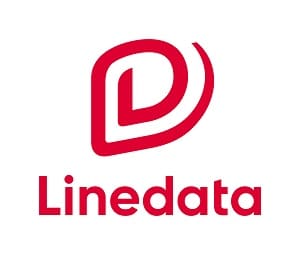Recent history has revealed that traditional policies and systems aren’t enough to protect our organizations from significant disruption. Linedata’s Anup Kumar shares how companies can enhance enterprise capabilities across compliance, risk management, transparency and ethical decision-making by embracing the digital-first world.
Sponsored
Prior to 2020, many organizations globally believed their practices and policies in place were sound enough to withstand disruption and ongoing regulatory changes – that is, until unprecedented disruption occurred with COVID-19. This level of resilience existed but hadn’t yet been stress-tested.
Companies have been implementing digital transformation initiatives, but the sudden shift to near-global remote working has proved to be a tipping point. The fact that institutions survived – and in many cases thrived – dispelled long-held beliefs about barriers to change and provided financial incentives to adopt digital offerings that created efficiencies, provided holistic views of operations and allowed for greater transparency.
The pandemic forced companies across every sector, especially within financial services, to adapt overnight while continuing to seamlessly support customers and comply with regulations and to deal with cybersecurity threats and the changed landscape. In fact, the digital transformation made the strongest case for further establishing operational resilience and business continuity within business models.
Overall, there is a growing realization that the cumbersome and archaic processes for compliance management are no longer sufficient to meet regulatory demands. Globally, standards in this area shift continuously, and navigating them can feel overwhelming at times. Between GDPR and privacy regulations, SEC regulations, anti-fraud and financial crimes regulations (KYC/AML) and, more recently, ESG directives that influence investor, board and other stakeholder behaviors, there is a lot to consider, manage and continually adapt to.
To ensure the most optimal execution, companies must truly embrace the nature of the digital-first world. At the forefront of this transformation to become more operationally resilient is the risk management framework and compliance – two key aspects that dictate and drive business decisions daily.
Achieving Operational Resilience
The simplest definition of operational resilience is an organization’s ability to operate “business as usual” in the event of the unexpected. The overarching focus is to expand business continuity initiatives to focus on the impacts, risks and minimizing the disruption of service to internal and external stakeholders.
When thinking about governance, risk management and compliance (GRC), there are four foundational elements that need to come together to deliver operational resilience:
- Build a robust compliance program with clearly articulated policies and procedures. It’s essential that organizations create a culture based on compliance and ethics, founded in organizational behaviors. As an added step, consider creating an additional layer of greater autonomy by having compliance report into the board.
- Leverage digital transformation to build regulatory agility. By implementing digital tools to operationalize GRC, as well as utilizing the AI and automation throughout the compliance processes, organizations will streamline the way in which compliance functions are handled and be able to rapidly evolve the GRC framework as regulations and risk profile changes.
- Invest in GRC expertise to ensure that not only are your employees and organization are supported and informed, but so are your clients, partners and prospects. By implementing comprehensive organizational processes and investing in engaging with industry leaders to support your organization, it allows the company to best manage and oversee compliance needs. This is an area one should never under invest in. Spend the time and resources needed.
- Extend educational resources beyond GRC to provide all with the most holistic and fluid approach, not only to their line of work, but to industry practices as well. Far too often, it is easy to focus on the wheelhouse in which one works, but the most dynamic and informed employee is the one who provides the right recommendations, implements the right protocols and curates solutions that best meet the customers’ needs.
Together, all of these components build a solid foundation that best supports the company in navigating ever-changing compliance and regulations appropriately. Ultimately, this aides in ensuring operational resilience.
Taking Transparency to the Next Level
While the above steps are essential to success, one additional element is required to truly ensure operational resilience and compliance, especially in the digital transformation era: transparency. Now more than ever, it is essential to have an overarching, transparent view into a company’s interaction as it opens the door to greater visibility, problem-solving and alignment across global, regional and local regulations.
Through digitization and automation, businesses can accelerate their core compliance processes, thus improving monitoring and overall regulatory compliance. Within this stack are elements of front-end and back-end solutions – both of which hold critical importance. Digitization and automation provide opportunity to streamline processes, allowing for efficiencies to develop and be nourished.
Recently, Linedata partnered with Stavtar Solutions to introduce an industry-leading solution that expands and strengthens Linedata’s expense, contract and vendor management solutions for the asset management and alternative funds industry. The full-service expense management solution, powered by StavPay platform, offers CFOs and finance teams a holistic, plug-and-play back-office solution that addresses and generates efficiencies to three core areas:
- Expense allocation transparency, which helps accurate and compliant allocation of expenses to funds management companies. The manual process of allocating expenses across funds can be complex, prone to error and open to manipulation; StavPay solves this through automation and visibility on one platform.
- Full-service expense administration offered as a co-sourced model wherein Linedata provides expense, contract and vendor management service on a consumption basis, leveraging the enabling digital technology from Stavpay to drive automation and operational efficiency.
- Improved control environments and digital audit trails to ensure that all processes carried out are in compliance with global and regional regulations and associated fund agreements.
This partnership, like many others, propels the ever-needed digital transformation across the fund services and asset management industries. It’s evident that this digital revolution pushed adoption, focusing on transparency and efficiency not only on the back-end, but as a full-service offering to better manage processes, which ultimately better serves the client.
For companies like Linedata specifically, solutions like the StavPay platform enables Linedata to digitize the service offering, which helps support clients’ digital transformation activities. Through this, clients can create unparalleled transparency between investors and fairly allocate expenses while also facilitating and adhering to SEC compliance and regulations set forth.
How To Maintain Resilience in a Digital-First World
As the financial services industry continues to adapt to a digital-first world, there are still areas of opportunity, including new technologies, solutions and platforms. But opportunities are often accompanied by challenges – while we acknowledge the undeniable benefits of digital transformation, we cannot ignore the difficulty it presents.
As the race toward automation and a technology-driven environment grows, the regulations around risk evolve and the threats grow. In enabling business processes to be carried out via automation, organizations need to ensure their digital infrastructure can sustain such advancements and must have parameters and precautions in place against the biggest threat: cybercriminals. These solutions must be prepared for threats in the digital world. Protection against cybercrime must be woven throughout all practices, but most importantly those in which automation occurs. What’s more, recent changes – including the shift to a remote-work setting, internal networks moving to the cloud and an increased use of personal Wi-Fi networks that may lack firewalls – have broken down boundaries of protection, creating greater opportunity for cybercriminals. Since the onslaught of COVID-19, there has been a 700 percent increase in cyber incidents, with 70 percent of these occurrences originating at the endpoints. Because of this, the SEC has shown greater interest in improving and monitoring processes to prevent cybercrime.
Recent history has taught us a slew of best practices and offered new use cases for technology and digital solutions. What is most exciting about this is that we can now see we’re just getting started when it comes to building technology that can truly change the world and help businesses of all sizes remain compliant and transparent during times of change – all starting with their thought leaders, internal practices and proactive investments into the future – while also setting up clients for success.
At the end of the day, we’re all looking to do what’s morally and ethically sound. What better place to focus that priority than the advancements of digital platforms and offerings, leveraging this profound technology space to withstand disruption and create efficiencies that are compliant with regulations set forth through industry standards? Time will tell, but the digital revolution is well on its way, and it’s exciting to see the advancements organizations are making.
 With 20 years’ experience and 700+ clients in 50 countries, Linedata’s 1,100 employees in 20 offices provide global humanized technology solutions and services for the asset management and credit industries that help its clients to evolve and to operate at the highest levels. Headquartered in France, Linedata achieved revenues of €161 million in 2020 and is listed on Euronext Paris compartment B FR0004156297-LIN – Reuters LDSV.PA – Bloomberg LIN:FP.
With 20 years’ experience and 700+ clients in 50 countries, Linedata’s 1,100 employees in 20 offices provide global humanized technology solutions and services for the asset management and credit industries that help its clients to evolve and to operate at the highest levels. Headquartered in France, Linedata achieved revenues of €161 million in 2020 and is listed on Euronext Paris compartment B FR0004156297-LIN – Reuters LDSV.PA – Bloomberg LIN:FP.










